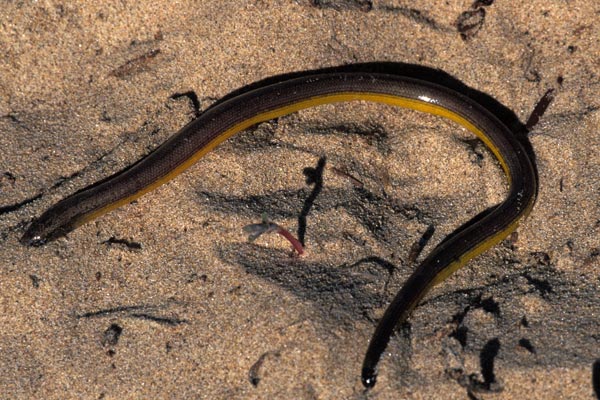
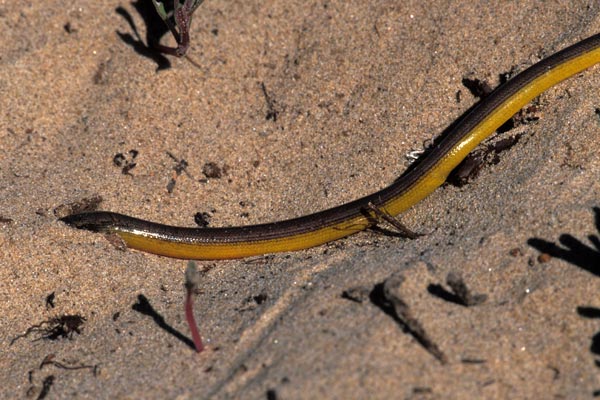
I was happy to finally see another one of these after twenty or so years. When I was a kid I saw a dozen or so at different times in southern California, but I hadn't stumbled across another since then.
Many references split this species into two subspecies: A. p. pulchra (Silvery Legless Lizard) and A. p. nigra (Black Legless Lizard), but more recent studies have concluded that the silvery and black variations are just points along a continuum of shades, and not separable subspecies.
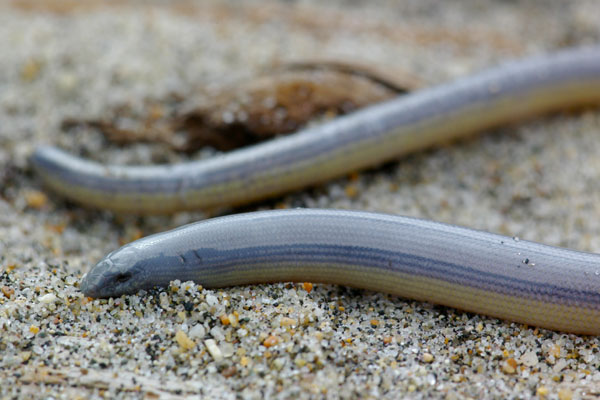
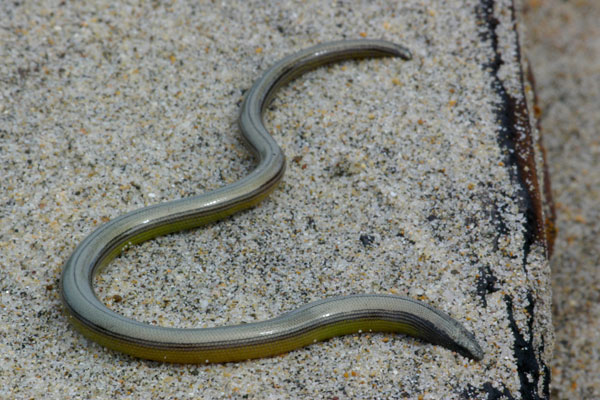
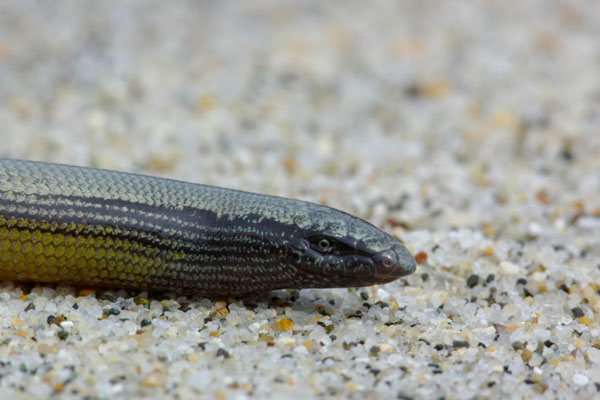
The day started out cloudy and cool, and we were initially worried that it would be too cold to find any lizards. However, within an hour and a half or so we had come across the two charming specimens pictured above. Note how differently the two are colored, and how neither is very dark dorsally, despite this being the absolute heart of the population formerly designated as the subspecies "Black Legless Lizard". We named these two after their discoverers: the larger, blue-gray one is "John"; the shinier, yellow-gold one is "Jackson" (we don't know what gender they were). Alas, we headed out to look for horned lizards before "David" could be found. In hindsight this might have been a mistake, since no horned lizards put in an appearance that day.
- Papenfuss, Theodore & Parham, James. (2013). Four New Species of California Legless Lizards (Anniella)
- Behler, J. L., King, F. W. 1979. The Audubon Society Field Guide to North American Reptiles & Amphibians
- Crother, B. I. (ed.) 2017. Scientific and Standard English Names of Amphibians and Reptiles of North America North of Mexico, with Comments Regarding Confidence in Our Understanding, Eighth Edition
- Smith, H. M. 1995. Handbook of Lizards: Lizards of the United States and Canada
- Smith, H. M., Brodie, E. D. Jr. 1982. Reptiles of North America: A Guide to Field Identification
- Stebbins, R. C. 2003. Peterson Field Guide to Western Reptiles and Amphibians, Third Edition